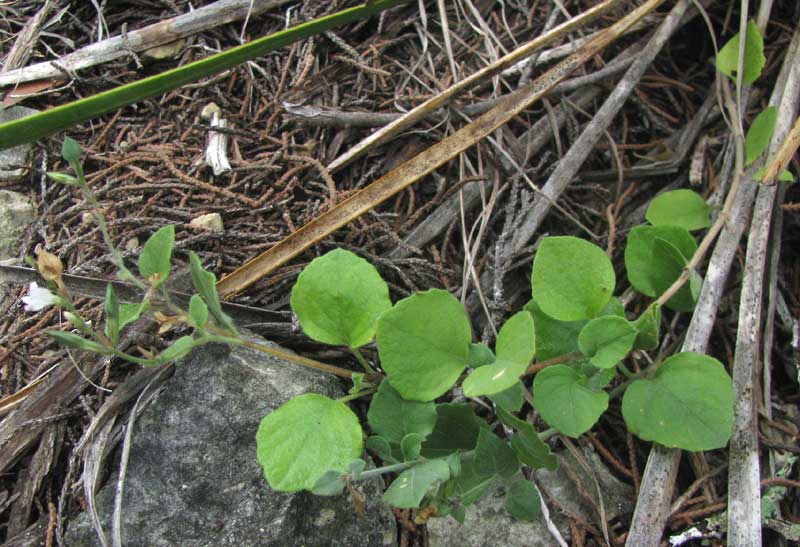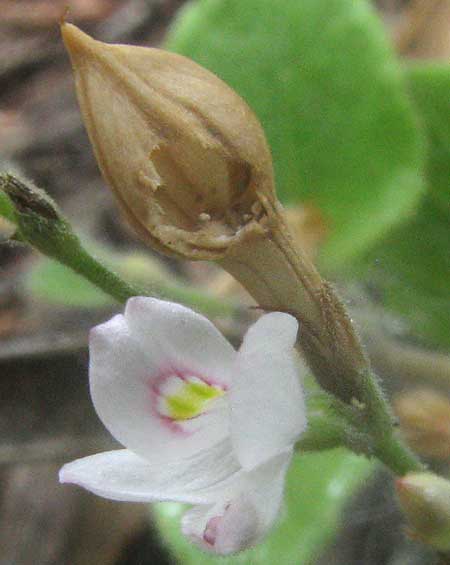Excerpts from Jim Conrad's
Naturalist Newsletter

from the September 15, 2013 Newsletter issued from the Frio Canyon Nature Education Center in the valley of the Dry Frio River in northern Uvalde County, southwestern Texas, on the southern border of the Edwards Plateau; elevation ~1750m (~5750 ft); N29.62°, W99.86°; USA
WRIGHTWORT
In this part of the world you run into kinds of plants -- into genera of plants -- that even most professional botanists have never heard of. Such a wildflower is blossoming here this week, in thin soil atop limestone on forested slopes. It's in the never-heard-of-by-me genus Carlowrightia, named after the American botanist Charles Wright (1811-1885). In 1849 he joined an army expedition through Texas, botanizing from Galveston to San Antonio and then on to El Paso, so probably he passed right through here, which explains why we might have plants named after him. That's it above.
It's a modest little thing arising from a semi-woody base mostly consisting of dead stems from previous seasons, its leaf-bearing part only about a foot long and reclining on the ground, and its oval leaves not more than 5/8ths-inch long (15mm). The whitish flower at the tip of its stem is only about half that long. Below, you can see a picture of the flower and a brown fruit above it, with a hole in the fruit left by a hungry bug:

The picture informs us that the flower is bilaterally symmetrical and bears a yellow spot surrounded by a thin, rose-colored halo on the corolla's top lip, the lip composed of two fused corolla lobes. The corolla's bottom lobe is scoop-shaped, cupping the anthers of the flower's two stamens.
A bilateral flower with only two stamens with this particular shape and these markings already strongly suggests a family we saw a lot of in Mexico -- the large, mostly tropical Acanthus Family, the Acanthaceae. The shape of the fruit above the flower in the picture also is very characteristic of the Acanthus Family, with its larger, seed-bearing part rising above a more slender base. "It's shaped like an upside-down banjo," we used to say back in taxonomy class, with the banjo's neck emerging from the calyx.
In our immediate area we have two Carlowrightia species, with several more desert-loving species to the west and south. The one in our pictures is CARLOWRIGHTIA TORREYANA, in books often called the Torrey's Wrightwort. It's endemic just to southwestern Texas and adjacent Mexico, so here's yet another species you pretty much have to come here to see.